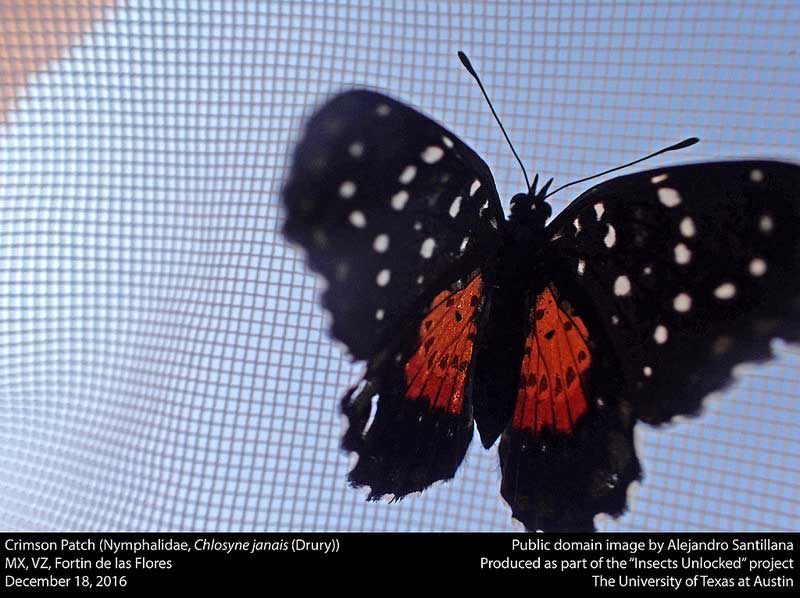
Superregnum: Eukaryota
Cladus: Unikonta
Cladus: Opisthokonta
Cladus: Holozoa
Regnum: Animalia
Subregnum: Eumetazoa
Cladus: Bilateria
Cladus: Nephrozoa
Cladus: Protostomia
Cladus: Ecdysozoa
Cladus: Panarthropoda
Phylum: Arthropoda
Subphylum: Hexapoda
Classis: Insecta
Cladus: Dicondylia
Subclassis: Pterygota
Cladus: Metapterygota
Infraclassis: Neoptera
Cladus: Eumetabola
Cladus: Endopterygota
Superordo: Panorpida
Cladus: Amphiesmenoptera
Ordo: Lepidoptera
Subordo: Glossata
Cladus: Coelolepida
Cladus: Myoglossata
Cladus: Neolepidoptera
Infraordo: Heteroneura
Cladus: Eulepidoptera
Cladus: Ditrysia
Cladus: Apoditrysia
Cladus: Obtectomera
Superfamilia: Papilionoidea
Familia: Nymphalidae
Subfamilia: Nymphalinae
Tribus: Melitaeini
Subtribus: Chlosynina
Genus: Chlosyne
Species: Chlosyne janais
Subspecies: C. j. gloriosa – C. j. janais – C. j. marianna
Name
Chlosyne janais (Drury, 1782)
Synonymy
Papilio janais Drury, 1782
References
Primary references
Additional references
Vernacular names
English: Crimson-patch Checkerspot; Crimson Patch
Chlosyne janais, the crimson patch or janais patch, is a common New World butterfly found from Colombia north through Central America and Mexico to southern Texas, with occasional sightings in southeastern Mexico and northern Texas. The dorsal and ventral wing surface is black with several undulating rows of small white spots on the medial forewings and along all outer wing margins. On each dorsal hindwing is a medial orange-red patch situated anteriorly. The ventral hindwings have a fragmented yellow proximal patch bordered by a thick postmedial band of red that does not reach the wing margins; maximum wingspan is 4.8–6.7 cm.
Caterpillar
Adults inhabit the periphery of lowland tropical to subtropical forests, fields, and along streams, where they feed on flower nectar. Reproduction is continuous in the tropics, whereas in temperate areas several broods are produced from July to November. The caterpillars are grey white to green with several transverse rows of fleshly black spines; they feed primarily on acanthus shrubs, especially Anisacanthus wrightii and Odontonema callistachus (in Texas), upon which adult females lay their eggs.
The crimson patch can reach high numbers in the Rio Grande Valley, but the population is periodically killed off by cold snaps; the area is then recolonized by members of the Mexican population. A very similar species is the rosita patch (C. rosita), which is distinguished from the crimson patch by the former's lack of spots on the wing margins.
References
USGS. Butterflies of North America—Chlosyne janais. Retrieved September 27, 2005 from https://web.archive.org/ . FieldGuides: Crimson Patch. Retrieved September 27, 2005 from https://web.archive.org/ um=1
Retrieved from "http://en.wikipedia.org/"
All text is available under the terms of the GNU Free Documentation License

